Best Growing Method for THCA Flower: Indoor, Outdoor, or Greenhouse?
Choosing the best THCA growing method is one of the most critical decisions you'll make as a cultivator. Whether you're considering growing THCA at home for personal use or planning a commercial operation, the cultivation environment you select will profoundly impact your success, investment requirements, and final product quality.
THCA (tetrahydrocannabinolic acid) is the non-psychoactive precursor to THC found in raw cannabis plants. When properly cultivated and cured, THCA flower offers unique benefits and is gaining popularity among consumers seeking the therapeutic properties of cannabinoids. However, producing high-quality THCA flower requires careful consideration of your growing method.
The three primary THCA cultivation methods each offer distinct advantages and challenges: indoor growing provides maximum environmental control but requires significant investment; outdoor cultivation offers natural sunlight and lower costs but depends heavily on climate; and greenhouse growing bridges the gap between both approaches with semi-controlled conditions at moderate expense.
In this comprehensive THCA cultivation guide, we'll explore each method in detail, examining startup costs, operating expenses, quality potential, scalability, and ideal use cases. By understanding how these THCA farming methods compare, you'll be equipped to make an informed decision that aligns with your goals, resources, and location. Whether you're a beginner exploring THCA growing for beginners or an experienced cultivator looking to optimize your operation, this guide will help you determine the best way to grow THCA flower for your specific situation.
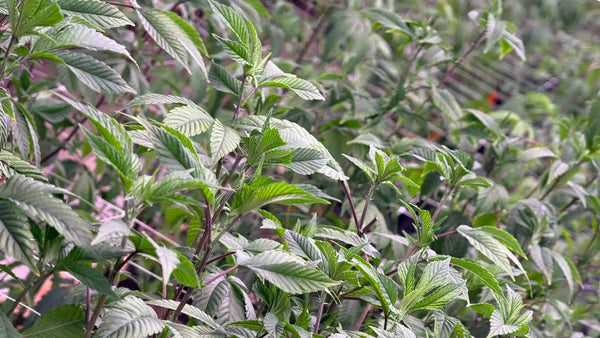
Indoor THCA Growing: Maximum Control and Consistency
Overview and Best Applications
THCA indoor growing represents the pinnacle of environmental control in cannabis cultivation. This method involves creating a completely controlled environment within a dedicated space—whether that's a spare bedroom, basement, warehouse, or purpose-built grow room. Indoor cultivation is the preferred choice for many professional THCA growing operations focused on premium product quality.
Indoor growing is best suited for urban growers with limited outdoor space, cultivators seeking year-round production capabilities, those prioritizing maximum control over growing conditions, and operations requiring discretion. This method excels in regions with extreme climates where outdoor growing is challenging or impossible, areas with strict zoning regulations, and situations where precise cannabinoid profile development is paramount.
Complete Environmental Control
The defining advantage of indoor THCA cultivation is absolute control over every environmental variable. Temperature can be maintained within narrow ranges optimal for different growth stages—typically 70-85°F during vegetative growth and slightly cooler during flowering. Humidity levels can be precisely regulated, starting at 60-70% for young plants and gradually decreasing to 40-50% during late flowering to prevent mold and maximize resin production.
Lighting represents both the greatest expense and the most powerful tool in THCA indoor growing. Cultivators can choose from various technologies including LED (most efficient and customizable spectrum), HPS (high-pressure sodium, proven effective but heat-intensive), CMH (ceramic metal halide, excellent spectrum balance), and hybrid systems combining different technologies. Indoor growers control photoperiod precisely, triggering flowering by adjusting light schedules and maintaining consistent dark periods critical for THCA development.
CO2 enrichment, nearly impossible outdoors, becomes a practical tool indoors. Supplementing carbon dioxide to 1200-1500 PPM can increase growth rates and yields by 20-30% when combined with adequate lighting and nutrition. Air circulation and exchange can be optimized with inline fans, carbon filters for odor control, oscillating fans for plant strengthening, and fresh air intake systems.
Advanced THCA Growing Techniques for Indoor Spaces
Indoor environments enable sophisticated THCA growing techniques impossible in other settings. Vertical growing systems maximize space utilization by stacking growing areas, significantly increasing canopy per square foot. Sea of Green (SOG) methods involve growing many small plants with minimal vegetative time for rapid turnover, while Screen of Green (SCROG) techniques use training nets to create even canopies that maximize light exposure.
Hydroponic and aeroponic systems offer faster growth rates, more efficient nutrient uptake, easier pest management, and water conservation compared to soil. However, these systems require greater technical knowledge and investment in equipment. Indoor growers can also implement sophisticated integrated pest management strategies using beneficial insects, UV sterilization, and environmental controls that prevent pest establishment.
Startup and Operating Costs
The financial commitment for THCA indoor growing is substantial. Initial setup costs for a small home operation (4x4 grow tent) typically range from $2,000-$5,000, including grow tent or space preparation, LED lighting system, ventilation and carbon filtration, climate control equipment, and growing medium and containers. Medium-scale operations (10x10 room) can require $10,000-$25,000, while commercial warehouse operations may need $100,000-$500,000+ in infrastructure.
Operating expenses include electricity (typically $200-$500 monthly for small home grows, substantially more for larger operations), nutrients and supplements ($50-$200 per cycle), growing media replacement ($100-$300 per cycle), and equipment maintenance and replacement. These ongoing costs mean indoor growing requires careful financial planning and usually necessitates commercial sale to justify expenses.
Quality and Yield Potential
When properly executed, THCA indoor growing produces the highest quality flower available. Environmental optimization allows for maximum trichome development, producing flower with THCA concentrations often 2-5% higher than outdoor equivalents. Consistency across batches is achievable, creating recognizable product profiles. The absence of weather-related stress, pests, and contamination results in pristine flower appearance with vibrant colors, intact trichomes, and no environmental damage.
Indoor yields typically range from 0.5-2 grams per watt of lighting, depending on experience and technique. A well-managed 4x4 space might produce 1-2 pounds per harvest, with multiple harvests possible annually. However, these yields come with the caveat of high production costs per gram.
Ideal Scenarios for Indoor Growing
Choose THCA indoor growing if you're operating in urban or suburban areas with limited outdoor space, live in regions with harsh winters, extreme heat, or short growing seasons, need year-round production for consistent supply, are focusing on craft small-batch cultivation for premium markets, require discretion and security, want to develop specific cultivar characteristics through environmental manipulation, or are willing to invest significantly upfront for long-term quality advantages.
Outdoor THCA Growing: Harnessing Nature's Power
Overview and Best Applications
THCA outdoor growing is humanity's original cultivation method, leveraging natural sunlight, soil ecosystems, and environmental cycles to produce cannabis. This approach is ideal for those with access to rural properties, budget-conscious cultivators, large-scale operations, and growers committed to sustainable and organic practices.
Outdoor cultivation works best in favorable climates with mild temperatures and appropriate growing seasons, for experienced growers comfortable working with environmental variables, in seasonal operations prepared for single annual harvests, and in regions with supportive legal frameworks for outdoor cannabis cultivation. The relationship between cultivator and environment becomes more collaborative than controlling, requiring adaptation and observation skills.
Natural Advantages and Challenges
The sun provides the most complete and powerful light spectrum available, completely free of operating costs. Natural sunlight intensity reaches 10,000+ lumens per square foot on clear days, far exceeding most artificial lighting. The full spectrum promotes robust plant development, strong structural growth, and complex terpene and cannabinoid profiles that many connoisseurs prefer.
Outdoor soil cultivation connects plants to complex soil ecosystems containing billions of beneficial microorganisms. Living soil supports nutrient cycling, disease suppression, water retention, and root development in ways difficult to replicate indoors. Many cultivators report that outdoor THCA flower develops more nuanced flavor profiles and entourage effects due to these natural growing conditions.
However, THCA outdoor growing requires accepting environmental variables beyond your control. Weather fluctuations can stress plants or reduce yields, pests and diseases are more prevalent, light dep schedules (covering plants to control photoperiod) require daily labor if multiple harvests are desired, and security becomes more challenging with visible plants.
Essential THCA Growing Techniques for Outdoor Success
Successful outdoor cultivation requires understanding how to cultivate THCA in harmony with natural cycles. Site selection is crucial—choose locations with 8+ hours of direct sunlight daily, good air circulation but protection from harsh winds, access to water sources, and well-draining soil or suitable ground for raised beds.
Soil preparation is foundational for outdoor success. Amend native soil with compost and organic matter, conduct soil testing to understand pH and nutrient levels, build raised beds if drainage is poor, and implement cover cropping in the off-season to improve soil health. Many successful outdoor growers spend years building living soil that requires minimal supplemental inputs.
Timing is everything in outdoor cultivation. Plant after the last frost when soil temperatures reach 60°F+, time flowering to avoid fall rains and early frosts, consider autoflowering varieties for faster harvests in short seasons, and implement light deprivation techniques if multiple seasons are desired.
Integrated pest management becomes critical outdoors. Companion planting with aromatic herbs and flowers can deter pests, while beneficial insect habitat encourages natural predation. Regular scouting and early intervention prevent minor issues from becoming catastrophes. Physical barriers like insect netting can protect young plants during vulnerable early growth.
Cost Advantages and Considerations
THCA outdoor growing offers dramatic cost advantages. Startup expenses for a small backyard garden might be just $500-$2,000, including seeds or clones, soil amendments and nutrients, irrigation system, pest management supplies, and basic tools and equipment. Medium-scale operations (10-50 plants) typically require $5,000-$15,000, while large-scale outdoor farms may need $50,000-$200,000+ for land preparation, irrigation infrastructure, and security systems.
Operating costs are significantly lower than indoor growing. Electricity expenses are minimal (primarily for irrigation pumps), sunlight is free, water costs depend on climate and water source (rainwater collection reduces expenses), organic amendments and fertilizers cost $200-$1,000 per season, and labor represents the primary ongoing expense. These economics make outdoor growing viable even for small-scale operations.
Yield and Quality Characteristics
Outdoor plants can grow substantially larger than indoor plants, with individual plants potentially producing 1-5+ pounds in optimal conditions. However, yields are highly variable depending on climate, growing season length, genetics selected, and cultivator experience. A successful outdoor operation might produce 1-2 pounds per plant on average.
Quality characteristics differ from indoor flower. THCA outdoor growing typically produces flower with slightly lower THCA percentages (15-22% is common, compared to 20-28% indoors), but often features more complex terpene profiles and entourage effects. The appearance may show more environmental variation, with some sun bleaching on exterior buds being normal. Bud density is often slightly lower than indoor flower, but properly grown outdoor THCA flower offers excellent effects and value.
Ideal Scenarios for Outdoor Growing
Choose THCA outdoor growing if you have access to suitable rural property with good sun exposure, live in favorable climates like California, Oregon, or Mediterranean regions, prioritize sustainability and organic growing practices, need to minimize capital investment, are comfortable with seasonal production cycles, want to produce large quantities, value natural growing processes, or are experienced with vegetable gardening and outdoor cultivation.

Greenhouse THCA Growing: The Best of Both Worlds
Overview and Best Applications
THCA greenhouse growing represents a middle path between indoor and outdoor cultivation, offering semi-controlled environments that harness natural sunlight while providing protection from weather extremes. This method is ideal for growers wanting environmental control without full indoor costs, those seeking to extend growing seasons beyond outdoor limitations, operations transitioning from outdoor to indoor, and cultivators in regions with challenging but not impossible climates.
Greenhouse cultivation enables year-round or extended-season production, reduces pest and disease pressure compared to outdoor growing, provides weather protection while maintaining natural light benefits, and allows for scaled environmental control based on budget and needs. This flexibility makes greenhouses increasingly popular among both small-scale home growers and commercial operations.
Types of Greenhouse Structures
Cold frames are the simplest option, consisting of low-profile structures with transparent tops that protect plants from frost and wind while extending seasons by 4-8 weeks. These passive systems require minimal investment ($100-$500) but offer limited environmental control.
Hoop houses (high tunnels) use curved metal framing covered with polyethylene film, creating simple but effective growing environments. Costs range from $1,000-$5,000 for DIY systems to $10,000+ for commercial installations. Hoop houses provide excellent light transmission, passive solar heating, protection from rain and wind, and the ability to manage humidity through ventilation.
Glass greenhouses offer the most sophisticated option, with rigid framing supporting glass or polycarbonate panels. Commercial glass greenhouses can include automated climate control, supplemental lighting systems, automated irrigation and fertigation, heating and cooling systems, and computerized environmental monitoring. Costs range from $20-$100+ per square foot for commercial installations, but these systems provide nearly indoor-level control.
Environmental Control Strategies
THCA greenhouse growing allows for various levels of climate management. Passive climate control uses natural ventilation through roll-up sides, shade cloth for temperature management, thermal mass (water barrels, concrete) for temperature buffering, and strategic orientation for optimal sun exposure.
Active climate control in more sophisticated greenhouses includes evaporative cooling pads, exhaust fans with automated controls, supplemental heating for cold periods, light deprivation systems for photoperiod control, and dehumidification equipment for humidity management. The level of automation you implement dramatically affects both costs and the degree of control achieved.
Cost-Benefit Analysis
Greenhouse cultivation offers an attractive middle ground economically. Startup costs for a small hobby greenhouse (10x12) range from $2,000-$8,000, including structure and covering, basic climate control (fans, shade cloth), irrigation system, and growing supplies. Medium commercial greenhouses (1,000-5,000 sq ft) require $20,000-$100,000, while large automated facilities can exceed $500,000.
Operating expenses fall between indoor and outdoor costs. Electricity costs are lower than indoor (primarily for fans, automated controls, supplemental heating/cooling), heating costs in cold climates can be significant, water usage is moderate, and maintenance of covering materials is required every 3-7 years. These economics often prove optimal for serious cultivators.
Quality and Production Characteristics
Greenhouse-grown THCA flower typically exhibits quality between outdoor and indoor products. THCA concentrations generally range from 18-25%, approaching indoor levels with proper management. The natural light produces robust terpene development, while environmental protection ensures clean, attractive flower appearance. Multiple harvests per year are possible with light deprivation or supplemental lighting, providing better returns than single outdoor harvests.
Plant size and yield vary based on structure type and management intensity. Expect 1-3 pounds per plant with good management, with 2-4 harvests possible annually depending on climate and techniques employed.
Ideal Scenarios for Greenhouse Growing
Choose THCA greenhouse growing if you want to balance control with natural light benefits, need extended seasons beyond outdoor limitations, have moderate budgets between indoor and outdoor extremes, value weather protection while maintaining sustainability, plan to scale operations gradually, want multiple harvests annually, live in regions with variable but workable climates, or are seeking optimal cost-to-quality ratios.
Decision Matrix: THCA Growing Comparison
To help you determine the best way to grow THCA flower for your situation, here's a comprehensive comparison of key factors:
| Factor | Indoor | Outdoor | Greenhouse |
|---|---|---|---|
| Startup Cost | High ($2,000-$500,000+) | Low ($500-$200,000+) | Moderate ($2,000-$500,000+) |
| Operating Cost | High (electricity, HVAC) | Low (water, nutrients) | Moderate (heating, cooling) |
| Quality Potential | Highest (22-30% THCA) | Good (15-22% THCA) | Very Good (18-25% THCA) |
| Consistency | Excellent | Variable | Good |
| Difficulty Level | Moderate-High | Moderate | Moderate |
| Scalability | Excellent | Excellent | Excellent |
| Legal Visibility | Low (discrete) | High (visible) | Moderate |
| Time Investment | High (daily monitoring) | Moderate (weekly checks) | Moderate-High |
| Yield Per Plant | 2-6 oz | 1-5 lbs | 1-3 lbs |
| Harvests Per Year | 4-6 possible | 1-2 typical | 2-4 possible |
| Energy Efficiency | Low | Excellent | Good |
| Pest Pressure | Low | High | Moderate |
| Climate Dependency | None | High | Moderate |
| Space Requirement | Flexible | Large | Moderate-Large |
Making Your Decision
Use this THCA growing comparison to evaluate your priorities. If quality and consistency are paramount and budget allows, choose indoor. If sustainability and low costs are priorities with suitable climate, choose outdoor. If you want balance between control and costs, choose greenhouse.
Consider your experience level as well. THCA growing for beginners often benefits from starting with a small greenhouse or outdoor garden before investing in complex indoor systems. The learning curve is gentler, and mistakes are less costly.
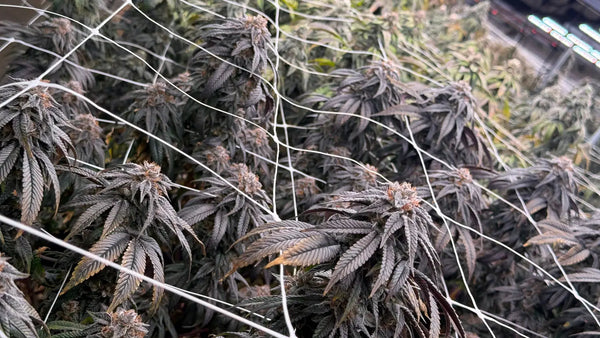
Regional Considerations for THCA Cultivation
Your location significantly influences the optimal THCA cultivation methods for your situation. Understanding regional factors helps you make informed decisions.
Climate Zone Recommendations
Mediterranean Climates (California, Southern Europe): These regions are ideal for outdoor growing with mild winters and warm, dry summers. Greenhouses extend seasons and enable multiple harvests. Indoor growing works but represents opportunity cost since outdoor excels.
Continental Climates (Midwest, Northeast US, Central Europe): These areas have short outdoor seasons with cold winters. Greenhouses with heating become valuable for season extension. Indoor growing provides year-round production capability. Outdoor growing is viable but limited to summer months.
Tropical and Subtropical Regions (Florida, Southeast Asia, Hawaii): Year-round outdoor growing is possible, though high humidity requires pest management diligence. Greenhouses must focus on ventilation and dehumidification. Indoor growing provides climate escape but requires significant cooling costs.
Arid Climates (Southwest US, Mediterranean coast): Outdoor growing works well with irrigation infrastructure. Greenhouses require less humidity control but need shade and cooling. Indoor growing offers environmental escape but electricity for cooling can be expensive.
Northern Short-Season Climates (Pacific Northwest, Northern Europe, Canada): Greenhouse cultivation shines here, extending short outdoor seasons. Indoor growing enables year-round production. Autoflowering varieties help outdoor growers work with limited seasons.
Legal and Regulatory Considerations
State and local regulations dramatically impact cultivation method choice. Many jurisdictions restrict outdoor growing to fenced, non-visible areas, making greenhouses or indoor growing necessary for compliance. Plant counts, canopy limits, and security requirements vary widely, affecting scalability of different methods.
Always verify local zoning regulations regarding agricultural structures (greenhouses), residential growing restrictions, and commercial cultivation licensing requirements before investing in infrastructure. Many growers have built expensive facilities only to discover local ordinances prohibit their operation.
Conclusion: Choose Your Path to THCA Success
There is no universally "best" method for how to cultivate THCA—the optimal approach depends entirely on your specific goals, available resources, location, and personal preferences. Each cultivation method offers distinct advantages that may align perfectly with your situation.
THCA indoor growing delivers unmatched quality and consistency through complete environmental control, making it ideal for craft cultivators, urban growers, and those in extreme climates. The significant investment and operating costs are justified when premium quality and year-round production are priorities.
THCA outdoor growing harnesses nature's power to produce large quantities of quality flower at minimal cost, perfect for rural growers in favorable climates who value sustainability and natural growing processes. While environmental variables require experience to manage, the economic advantages make outdoor cultivation accessible to small-scale home growers.
THCA greenhouse growing bridges both worlds, offering environmental protection and extended seasons while maintaining natural light benefits. This balanced approach suits growers seeking controlled conditions without indoor costs, making greenhouses increasingly popular among both hobbyists and commercial operations.
Your path forward should consider your budget (how much can you invest initially and monthly), location (climate, available space, legal restrictions), goals (personal use, craft production, commercial scale), experience level (beginner vs. experienced cultivator), values (sustainability, maximum quality, efficiency), and time availability (daily monitoring vs. weekly maintenance).
Many successful cultivators ultimately employ multiple methods—maintaining an indoor mother room and cloning station while running greenhouse or outdoor production, or using greenhouses for off-season production while maximizing outdoor growing during ideal months. As you gain experience with THCA growing techniques, you'll develop intuition for what works best in your specific situation.
Whether you choose indoor, outdoor, or greenhouse cultivation, commitment to learning, attention to detail, and patience will determine your success more than the method itself. Start with realistic expectations, begin small to develop skills, and scale as you gain confidence. The best THCA growing method is ultimately the one you can execute consistently and sustainably while achieving your personal goals.
Ready to experience the results of expert cultivation? Explore premium THCA flower grown using optimal methods at Oregon Hemp Flower's THCA collection, where you'll find carefully cultivated strains showcasing the quality potential of each growing method.
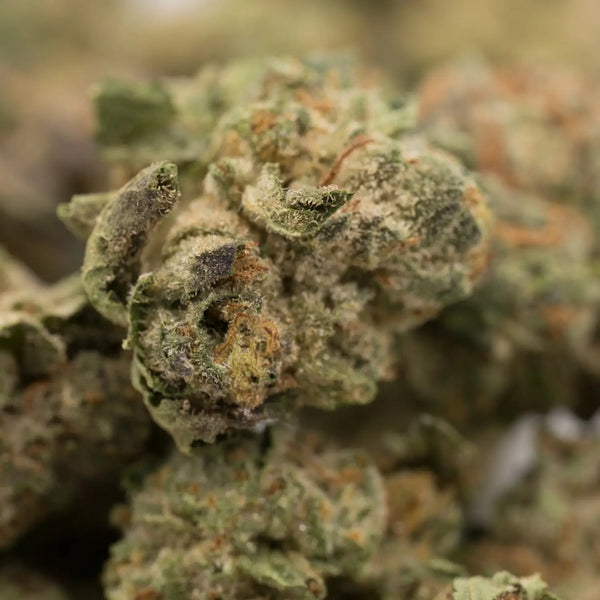
Frequently Asked Questions About THCA Growing Methods
Q: Can I legally grow THCA flower at home?
A: Legality varies dramatically by location. In US states with adult-use cannabis laws, home cultivation is often permitted with plant count limits (typically 6-12 plants). Hemp-derived THCA exists in a legal gray area federally, but state laws vary significantly. Always verify your specific state and local regulations before starting cultivation, as penalties can be severe.
Q: How long does it take to grow THCA flower from seed to harvest?
A: Timeline varies by method and genetics. Indoor growing typically takes 3-5 months total (2-4 weeks seedling, 4-8 weeks vegetative growth, 8-10 weeks flowering). Outdoor growing follows seasonal cycles, usually 4-7 months from spring planting to fall harvest. Autoflowering varieties can finish in 8-12 weeks regardless of method.
Q: What's the biggest mistake beginners make with THCA cultivation?
A: Overwatering is the most common beginner mistake across all methods, leading to root problems and slow growth. Other frequent errors include over-feeding nutrients (causing nutrient burn), poor pH management, inadequate research before starting, choosing inappropriate genetics for their method, and harvesting too early before THCA production peaks.
Q: Do I need special genetics for different growing methods?
A: While most genetics can be grown via any method, some perform better in specific environments. Indoor growing allows any genetics, including exotic varieties sensitive to environmental stress. Outdoor growing benefits from genetics bred for outdoor resilience, mold resistance, and appropriate flowering times for your climate. Greenhouse growing offers flexibility, but humidity-resistant genetics help in humid climates.
Q: How much does it cost to grow THCA flower at home?
A: Costs vary dramatically by method. A small indoor tent setup costs $2,000-$5,000 initially plus $200-$500 monthly in electricity and supplies. Outdoor growing might cost just $500-$2,000 total for a season with minimal operating expenses. Greenhouse growing falls between at $2,000-$8,000 initially with moderate operating costs. Per-gram production costs indoor typically run $1-$3, outdoor $0.25-$0.75, and greenhouse $0.50-$1.50.
Q: Which method produces the highest THCA percentages?
A: Professional THCA growing operations using indoor methods typically achieve the highest THCA concentrations (22-30%) through precise environmental optimization. Greenhouse cultivation can approach these levels (18-25%), while outdoor growing typically ranges from 15-22%. However, total cannabinoid profiles and terpene development involve complex factors beyond THCA percentage alone.
Q: Can I switch growing methods between seasons?
A: Yes, many cultivators use hybrid approaches. Common strategies include maintaining an indoor mother plant and cloning area while running outdoor or greenhouse production, using greenhouses during transitional seasons and growing outdoors during peak summer, or starting plants indoors during late winter for transplanting outdoors in spring.
Q: What equipment is absolutely essential for indoor THCA growing?
A: Essential indoor equipment includes grow lights (LED preferred for efficiency), ventilation system (inline fan and carbon filter), climate control (fans, possibly AC/heater), growing containers and medium, nutrient system, pH and EC meters, and timers for light cycles. While additional equipment can optimize results, these basics are necessary for success.
Q: How do I prevent mold and pests in different growing environments?
A: Prevention strategies vary by method. Indoor growing benefits from controlled humidity, air circulation, clean practices, and sealed environments. Outdoor growing requires integrated pest management, beneficial insects, companion planting, and regular monitoring. Greenhouse growing needs excellent ventilation, humidity control, screening on openings, and proactive pest monitoring. Across all methods, proper plant spacing, air circulation, and avoiding excess moisture are critical.
Q: What's the learning curve for each THCA growing method?
A: THCA growing for beginners often finds outdoor cultivation most forgiving, as soil ecosystems buffer mistakes and sunlight is automatic. Greenhouse growing offers moderate difficulty with more variables to manage but greater forgiveness than indoor. Indoor growing has the steepest learning curve, as mistakes with climate, nutrients, or lighting immediately impact plants, but the controlled environment also means fewer unexpected variables once you understand the fundamentals.

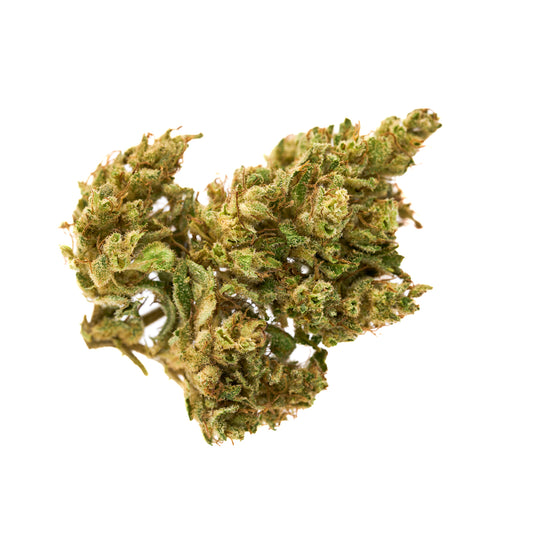
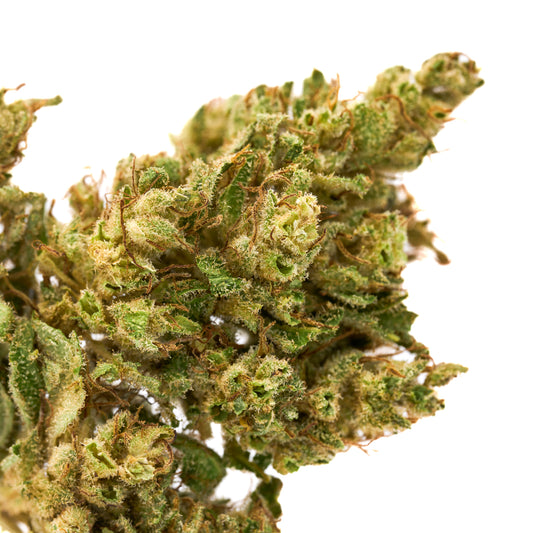
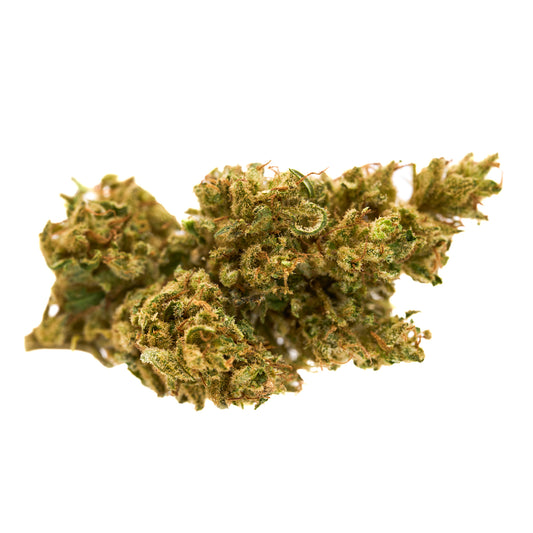
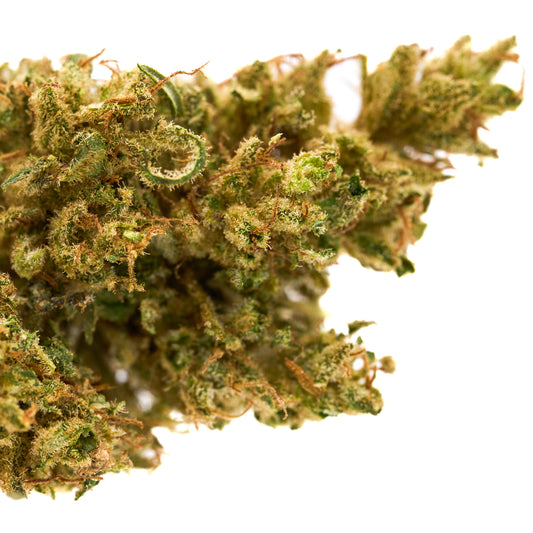
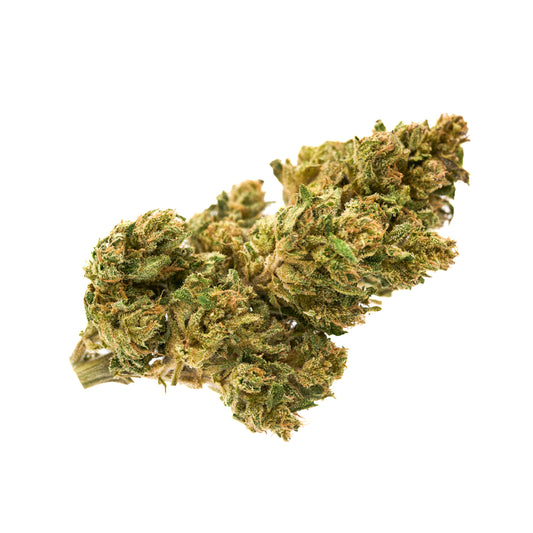
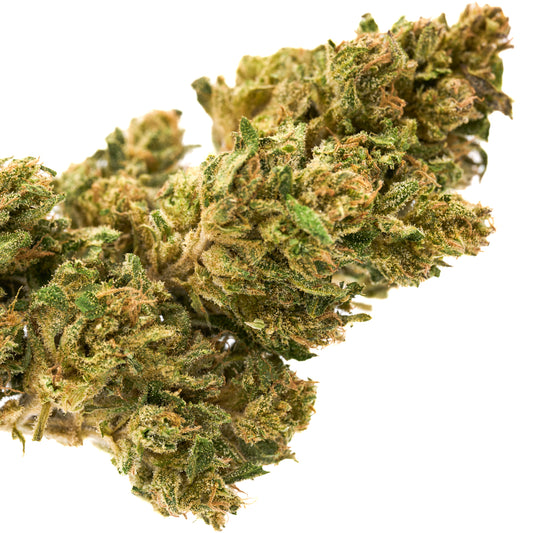



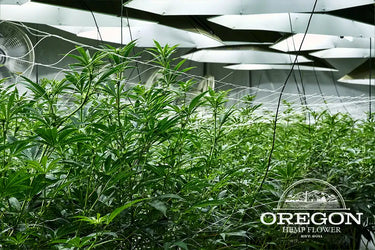

Leave a comment
Please note, comments need to be approved before they are published.